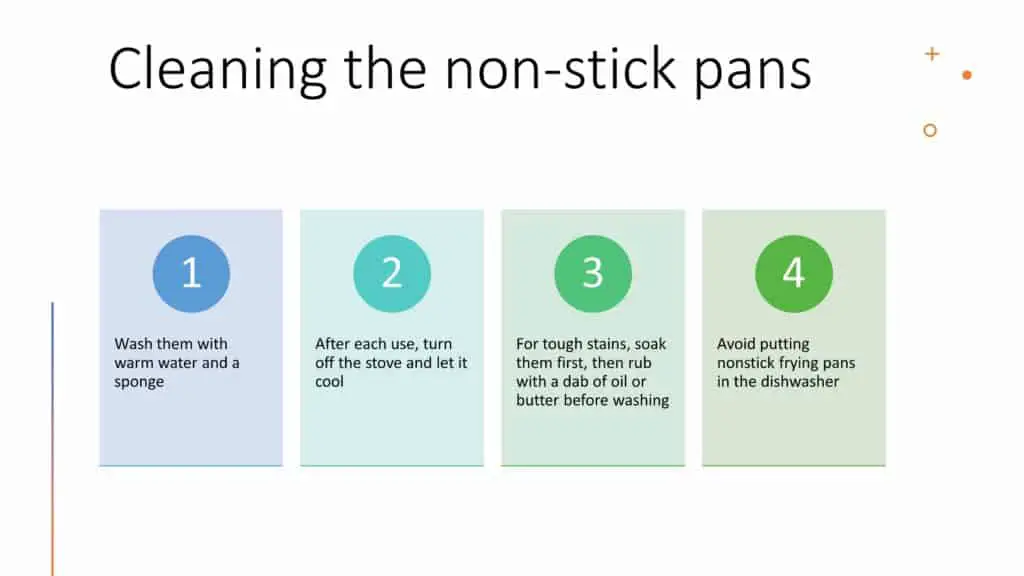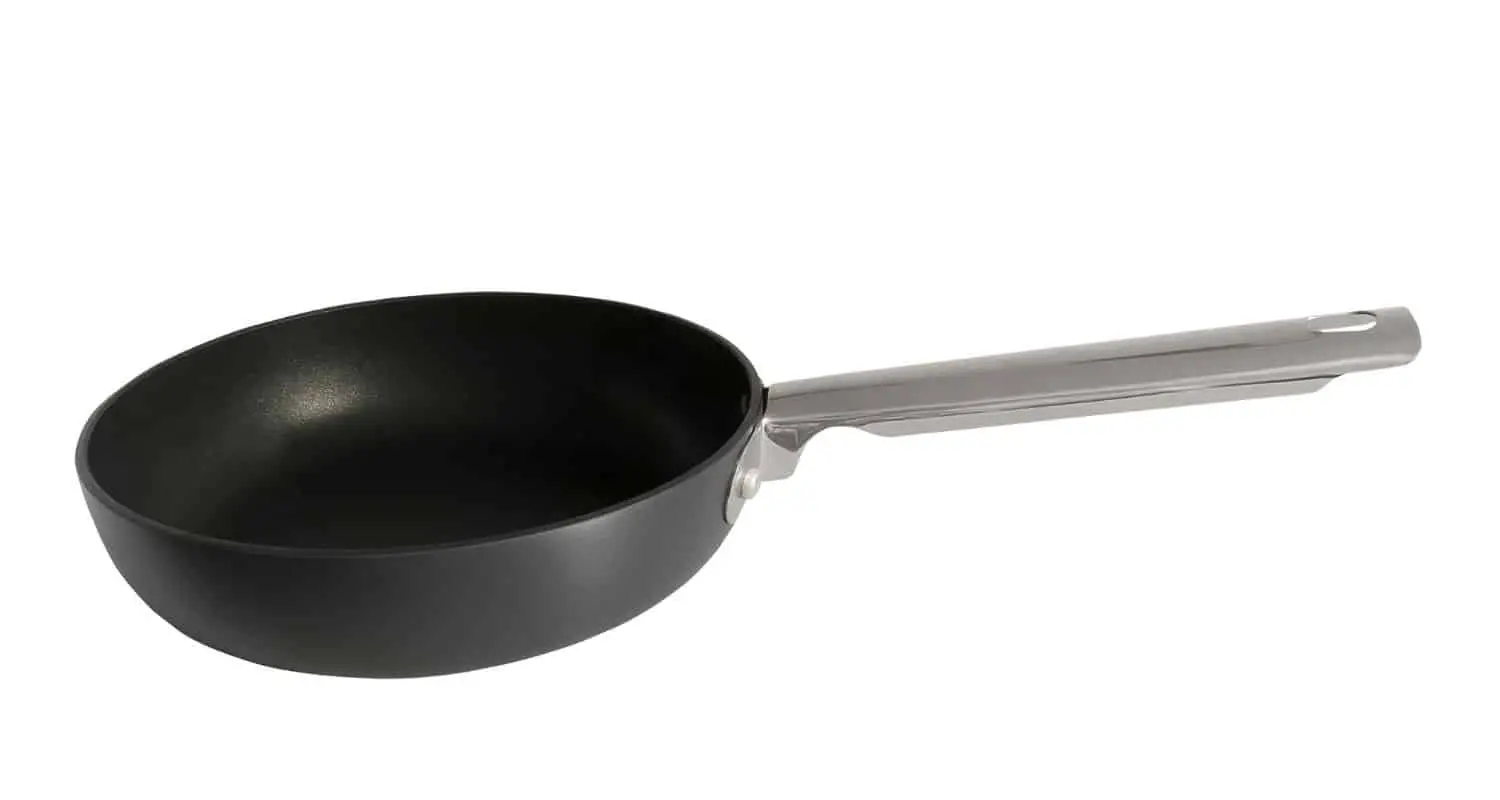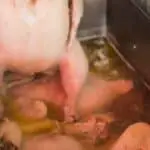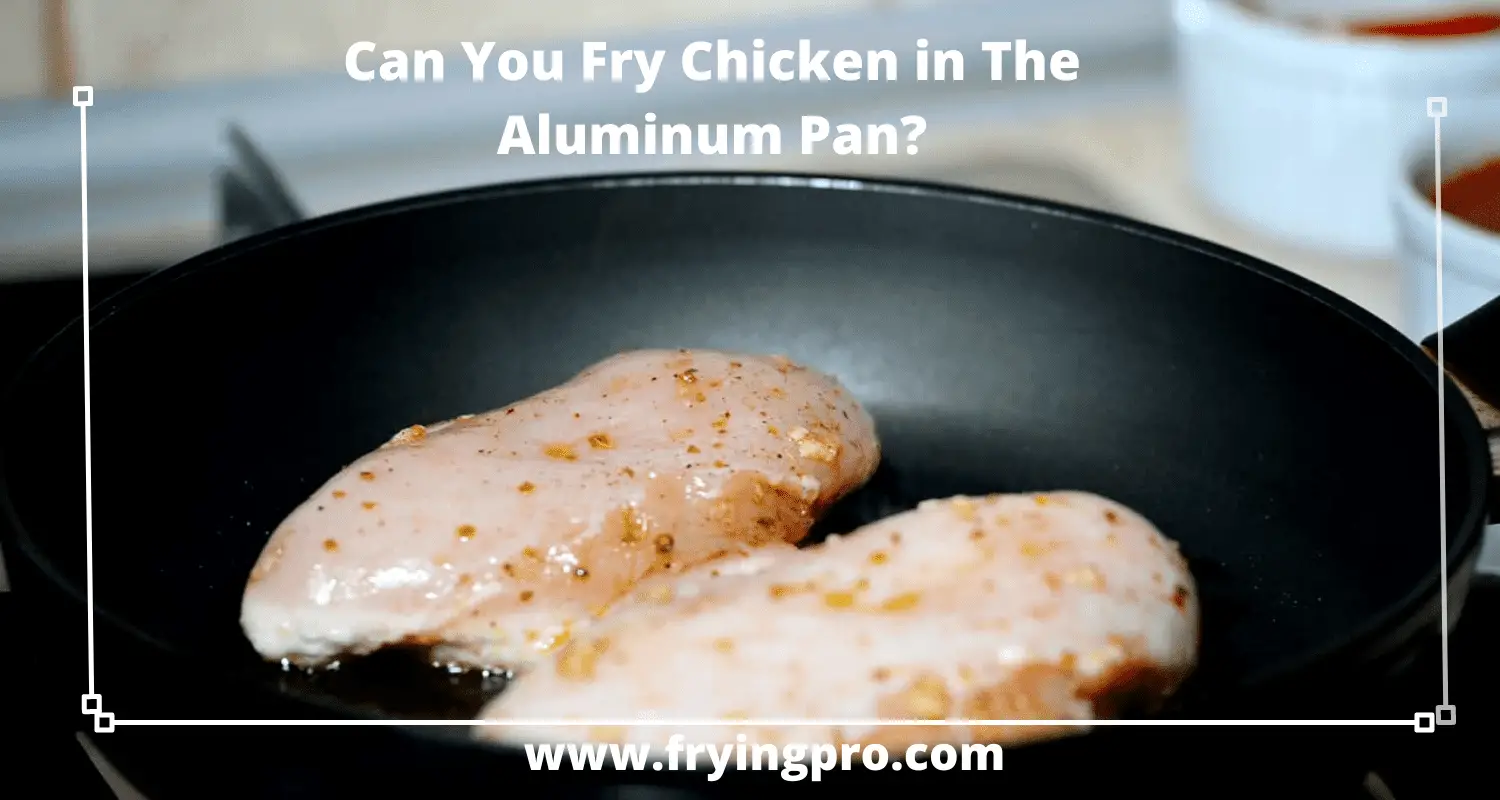Table of Contents
- How long do nonstick frying pans last?
- Pre-seasoning Nonstick Pans with Oil
- Cleaning the Nonstick Pans
- Proper Usage of Nonstick Frying Pans
- Take Care When Using Nonstick Frying Pans
- Mistakes to avoid
How long do nonstick frying pans last?
There’s something special about cooking with a non-stick pan. It gives you beautiful pancakes, scrambling eggs, and anything else you want to cook in it. And that is why it is a kitchen must-have for everyone.
Polytetrafluoroethylene (PTFE), popularly known as Teflon, has been used as a coating for multiple domestic and industrial uses. This PTFE coating has good thermal properties.
There’s something beautiful about the fresh coating on a nonstick pan coming straight out of the box. Some people notice that shiny surfaces are scratched and perform worse after a month, leaving them perplexed as to how long nonstick pans last?
Most nonstick frying pans can last four to five years if used with care. It also depends on the quality of coating, usage frequency, and maintenance of the pan.
The quality of the pan is another important factor that determines the price of the frying pan.
Using a metal spatula inside your nonstick pan might chip away its surface very soon. Using the proper utensils in these pans is essential for prolonging their lives. Non-stick frying pans will last longer if they are not overused. If you use a pan to make pancakes day after day, it might be time to replace the Teflon.
But it is not a big deal. With a bit of care and some tips, you can make your nonstick pans last longer.
Here’s how to prolong the life of your nonstick frying pan.
Pre-seasoning Nonstick Pans with Oil
You can naturally improve its longevity by cooking in oil or fat before cooking food in it. This will provide protection that keeps food from sticking to the pan. Here are some ways to do this:
1. Prepare the pan first by heating it on low flame for about 10 minutes so that it becomes nonsticky
2. Place oil or butter on a cotton cloth and wipe it over the surface of the pan, making sure you cover all sides except for its handle
3. Heat the pan again till it becomes smoky, then turn off the stove and let it cool
4. Use your new non-stick frying pan usually but without using too much oil or fat when cooking food in it
This method is called “pre-seasoning,” which is crucial when using nonstick pans. It will improve the pan’s lifespan while also preserving its non-stick quality. However, this method does not give your pan lasting protection from wear and tear.
Cleaning the Nonstick Pans
When cleaning a nonstick frying pan, it is advised not to use any harsh detergents or scrubbers because they could scratch its surface and damage the protective layer of seasoning you worked hard for at the start of cooking in the pan. Here are some methods you can follow in cleaning your pans without damaging their coating:
1. Wash them with warm water and a sponge
2. After each use, turn off the stove and let it cool
3. If any food particles stick on the pan surface, soak them first, then rub with a dab of oil or butter before washing
4. Do not put your nonstick frying pans in the dishwasher as this will damage their coating

Proper Usage of Nonstick Frying Pans
If you choose to follow the advice above, you can expect to have your non-stick pans last longer than usual. But whether you take these steps or not, there is one thing that can permanently ruin even the most acceptable quality nonstick frying pan – frequent usage.
The best way to make a nonstick frying pan last long is by using it only for particular tasks, such as cooking eggs and pancakes.
Nonstick pans are best for delicate foods that do not require too much oil or fat. If you want to use it for frying meat or fish, scrub the non-stick coating first by using a soft sponge and baking soda or dishwashing detergent before washing it with warm water.
For stubborn stains and burnt food particles, you may pour vinegar over them and boil some water inside the pan before cleaning it with a sponge. It would be better to avoid these items altogether if your frying pan is made of low-carbon steel, stainless steel, or enamel coatings.
Take Care When Using Nonstick Frying Pans
If you plan on making eggs sunny side up or omelet, do not flip them over because this could damage the nonstick coating.
Using wooden spoons when stirring food in a non-stick pan is best to not scratch its surface. Also, using metal utensils can break down or chip the protective layer, so cooking food in an oven would be better. It would also increase the average life of the frying pan.
Mistakes to avoid
To increase the life of the nonstick pan, make sure to avoid committing the following mistakes.
Overheating the pan
Non-stick frying pans are designed to withstand shallow temperatures, so it would be best to avoid exposing them for too long over high heat. Never leave your pan unattended on the stove after turning up the heat because this could ruin its coating. The best way to test if a nonstick frying pan is already hot enough is by dropping some drops of water. If they sizzle and evaporate quickly, then that’s an indicator that your cooking surface is already hot enough for cooking food over it.
Stacking All Your Non-stick Pans Together
A common mistake among people who own a lot of nonstick frying pans is stacking them all together on top of one another. The protective coating on each pan becomes thinner and more prone to damage every time you use it. Like steel knives, each use will make these frying pans lose their finest quality, thus decreasing their lifespan.
You can prevent this by taking good care of your cooking utensils and not using them frequently for everyday tasks such as cooking eggs or making pancakes.
Using Dishwasher
Putting your nonstick frying pans inside the dishwasher is another mistake. The harsh chemicals and high water pressure found in most washing machines can slowly damage the protective coating of these items, which is why it would be best to clean them by hand instead.
Avoid scrubbing too hard on their cooking surfaces as this could also scratch or ruin their nonstick coatings. You may let your pan soak first before cleaning with a sponge and warm water if food particles get stuck on the surface while cooking.
If you are interested to know the use of oven cleaner to clean frying pans, then read this blog post.
Using Baking Soda and Dishwashing Detergent for Washing
Never use baking soda and dishwashing detergent when cleaning nonstick utensils because this could harm their coating’s integrity. While these two ingredients effectively remove stains and burnt food particles, they can also damage the protective layer of nonstick frying pans over time.






